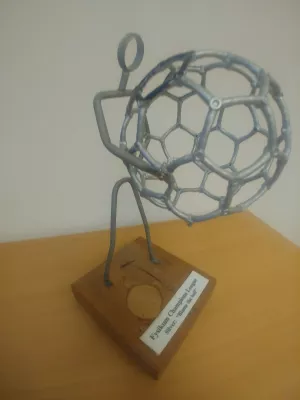
Balazs Konya
Researcher

Measurement of the nuclear modification factor for muons from charm and bottom hadrons in Pb+Pb collisions at 5.02 TeV with the ATLAS detector
Author
Summary, in English
Heavy-flavour hadron production provides information about the transport properties and microscopic structure of the quark–gluon plasma created in ultra-relativistic heavy-ion collisions. A measurement of the muons from semileptonic decays of charm and bottom hadrons produced in Pb+Pb and pp collisions at a nucleon–nucleon centre-of-mass energy of 5.02 TeV with the ATLAS detector at the Large Hadron Collider is presented. The Pb+Pb data were collected in 2015 and 2018 with sampled integrated luminosities of 208μb−1 and 38μb−1, respectively, and pp data with a sampled integrated luminosity of 1.17pb−1 were collected in 2017. Muons from heavy-flavour semileptonic decays are separated from the light-flavour hadronic background using the momentum imbalance between the inner detector and muon spectrometer measurements, and muons originating from charm and bottom decays are further separated via the muon track's transverse impact parameter. Differential yields in Pb+Pb collisions and differential cross sections in pp collisions for such muons are measured as a function of muon transverse momentum from 4 GeV to 30 GeV in the absolute pseudorapidity interval |η|<2. Nuclear modification factors for charm and bottom muons are presented as a function of muon transverse momentum in intervals of Pb+Pb collision centrality. The bottom muon results are the most precise measurement of b quark nuclear modification at low transverse momentum where reconstruction of B hadrons is challenging. The measured nuclear modification factors quantify a significant suppression of the yields of muons from decays of charm and bottom hadrons, with stronger effects for muons from charm hadron decays. © 2022 The Author(s)
Department/s
- Particle and nuclear physics
- eSSENCE: The e-Science Collaboration
Publishing year
2022
Language
English
Publication/Series
Physics Letters, Section B: Nuclear, Elementary Particle and High-Energy Physics
Volume
829
Document type
Journal article
Publisher
Elsevier
Topic
- Subatomic Physics
Status
Published
ISBN/ISSN/Other
- ISSN: 0370-2693

